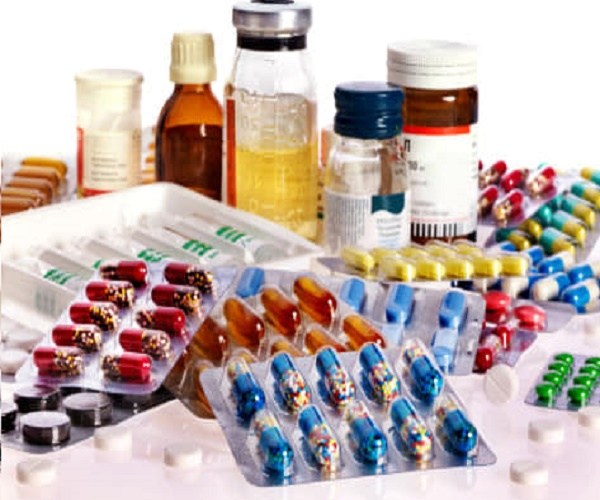BREAKTHROUGH! COVID-19 Drugs: Data And Text Mining Platform Yields 32 Drug Candidates And 73 Prospective Drug Combinations To Fight SARS-COV-2
Source: COVID-19 Drugs Jul 03, 2020 5 years, 5 months, 2 days, 18 hours, 53 minutes ago
COVID-19 Drugs: Researchers from the University of North Carolina (UNC) have used a new web-based platform to help identify synergistic and antagonistic drug combinations and their underlying mechanisms of action in the context of fighting the SARS-CoV-2 coronavirus disease.

The data mining tool, called COVID-KOP, prioritized 73 combinations of 32 drugs as potential treatments for COVID-19s, allowing the team then to identify 16 synergistic combinations and eight antagonistic combinations.
The research findings are published on the preprint server bioRxiv and are being peer-reviewed.
https://www.biorxiv.org/content/10.1101/2020.06.29.178889v1.full.pdf
Dr Eugene N. Muratov, Head of the Laboratory for Molecular Modeling, Division of Chemical Biology and Medicinal Chemistry, UNC Eshelman School of Pharmacy who is the corresponding author told Thailand Medical News, “COVID-KOP, a tool recently developed by our team and it integrates existing biochemical knowledge with that contained in literature on COVID-19 in the form of knowledge graphs. Overall, our results emphasize the importance of both drug repurposing and preclinical testing of drug combinations for potential therapeutic use against SARS-CoV-2 infections.”
Pharmaceutical or drug combinations have previously proved particularly effective at treating viral infections, including HIV, the Ebola virus, and poliovirus. These combinations significantly lower the risk of resistance developing to any one drug and can provide synergy, where the antiviral action of the combination is more potent than that of one of the drugs alone.
Though many current or upcoming trials are testing drug combinations for the treatment of COVID-19, few have completed extensive preclinical studies before being administered to patients.
Detailed investigation into these regimens is needed so that synergistic combinations can be more efficiently prioritized and any antagonistic effects identified prior to preclinical testing.
Dr Muratov and the team recently used data and text mining techniques to identify 281 combinations of 38 drugs for potential repurposing against SARS-CoV-2.
Utilizing their new COVID-KOP web-platform, the researchers refined the original list and prioritized 73 combinations of 32 before testing them using cytopathic and cytotoxicity assays.
.jpg) Summary of synergism or antagonism across 73 tested combinations. Due to biphasic dose response, synergism was separated from antagonism. Synergism is calculated as the sum of HSA.neg values from non-toxic dose combinations (Tox > 50%), and vice versa. The size of circle reflected the confidence of the observed synergism/antagonism (bigger circle = less doses were excluded due to toxicity).The inconclusive blocks (Nnontoxic < 25 or rough activity landscape) were shaded. Two dashed lines indicated the cutoff of HSA synergism (-100) or antagonism (100). Blu
e arrows highlighted the combinations between remdesivir and tertiary amine compounds from conclusive blocks.
Summary of synergism or antagonism across 73 tested combinations. Due to biphasic dose response, synergism was separated from antagonism. Synergism is calculated as the sum of HSA.neg values from non-toxic dose combinations (Tox > 50%), and vice versa. The size of circle reflected the confidence of the observed synergism/antagonism (bigger circle = less doses were excluded due to toxicity).The inconclusive blocks (Nnontoxic < 25 or rough activity landscape) were shaded. Two dashed lines indicated the cutoff of HSA synergism (-100) or antagonism (100). Blu
e arrows highlighted the combinations between remdesivir and tertiary amine compounds from conclusive blocks.
Significantly of the 16 combinations showing synergy against SARS-CoV-2, the most notable were combinations of the FDA-approved drug nitazoxanide with three other agents: remdesivir, amodiaquine, and umifenovir.
Interestingly nitazoxanide is a broad-spectrum anti-infective agent that has recently been explored for activity against SARS-CoV-2 due to its previously demonstrated antiviral activity.
In past studies of the Ebola virus, nitazoxanide has been shown to activate protein kinase-R, which induces type-I interferon production and signaling.
Dr Muratov, “Current knowledge suggests an interferon-inducing mechanism of nitazoxanide in vitro. SARS-CoV-2 is known for its unique immunopathology of reduced production of, but extra sensitivity to, type-I/III interferon.”
The study team said that as of June 18
th, 2020, 18 trials of nitazoxanide for COVID-19 were registered with clinicaltrials.gov.
The team said that among the eight antagonistic interactions they identified, the most notable and unexpected combination was remdesivir with hydroxychloroquine, which is currently undergoing clinical trials.
Dr Muratov commented, “The most striking antagonism was observed in the combination of the only two drugs ever approved with FDA Emergency Use Authorization (EUA): hydroxychloroquine and remdesivir (though we note the EUA for hydroxychloroquine has been withdrawn by the FDA).”
Detailed analysis using COVID-KOP suggested that the mechanism of action for this antagonism may involve pathways related to in viral entry/egress from cells.
Interestingly a literature search also showed that hydroxychloroquine inhibits an enzyme called glycogen synthase kinase-3β (GSK-3β), which regulates viral replication in the cases of dengue virus and SARS-CoV-1.
Dr Muratov added, “Thus, our computational analysis suggests that hydroxychloroquine’s inhibition of GSK-3β may play a role in its antagonism of remdesivir.”
Dr Muratov and colleagues say their study shows the importance of conducting preclinical research into antiviral drug combinations before applying them to patients, as well as the value of data and text mining in exploring the mechanisms underlying synergism and antagonism within the context of COVID-19.
He added, “Altogether, our findings demonstrate the utility of in silico tools for rational selection of drug combinations, the importance of preclinical testing of drug combinations prior to their administration in patients, and the overall promise of using drug repurposing and combination therapies against SARS-CoV-2.”
For more on
COVID-19 Drugs, keep on logging to Thailand Medical News.
HELP! Please help support this website by kindly making a donation to sustain this website and also all in all our initiatives to propel further research: https://www.thailandmedical.news/p/sponsorship

.jpg)